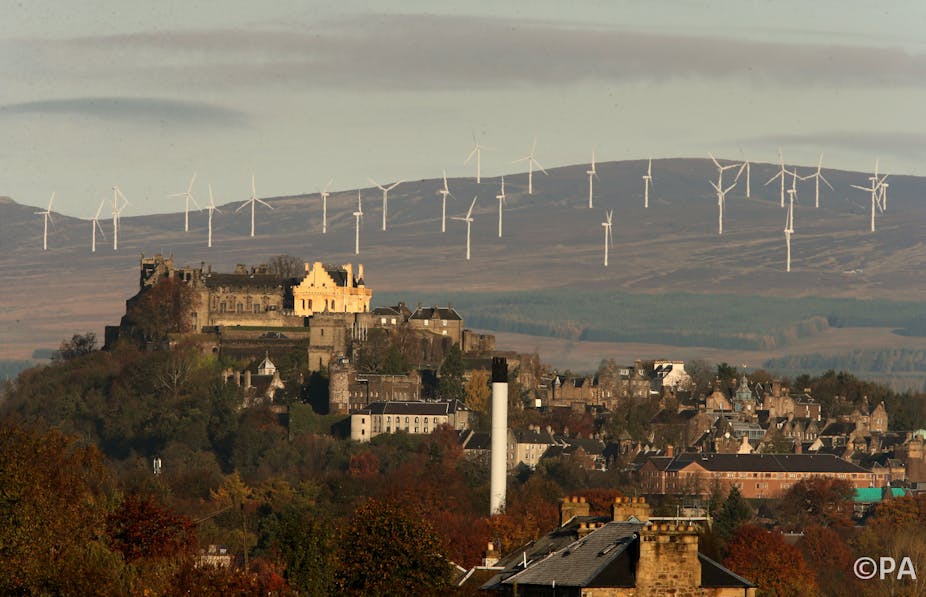Do we have enough onshore windfarms, or do we have too many? And who decides what “too many” looks like? The Conservative Party has announced it would end subsidies for new onshore wind farms if it won the next election, and Communities Secretary Eric Pickles has demonstrated an aggressive approach that has seen two thirds of planning applications for onshore wind farms rejected in the last year – 164 projects halted since January.
For example, under the ministerial power to call in a planning decision, Pickles rejected the plan proposed jointly by Wind Prospect and EDF for a six turbine, 12MW wind farm near Bridlington, Yorkshire – one of ten onshore wind farms rejected by call-in over the past year – in doing so overturning the decision of a planning inspector.
Is this war on windfarms wise? Tory peer Lord Deben was reported as saying the UK had “enough” onshore wind projects, and that though they will continue to be important after 2020, “it is not a decision we need to make now”. The Committee on Climate Change which he chairs reiterated that increasing onshore wind capacity during the 2020s was likely to be the most cost-effective means for the UK to meet its carbon emissions targets.
According to the committee, while there is sufficient capacity online and in the pipeline to meet 2020 targets, this relies on there being sufficient investment in other renewable technologies. Beyond 2020, there will be choices to be made on how to decarbonise Britain’s energy generation system. The most cost-effective method entails more onshore wind development through the 2020s; doing anything else faces raising costs with knock-on effects on energy prices and affordability.
Clearly the actual outcome will depend a lot on politics. Trade association Renewable UK stated, rather bitterly, that it is “unfortunate that we’ve reached a point where the Conservatives are allowing UKIP to dictate Tory energy policy”, calling Tory efforts to mollify the party’s rural electoral heartlands ahead of next year’s election “ill-considered, short-term policy-making on the hoof” and likely to damage what is becoming a flagship British industry.
According to the Committee on Climate Change, the most cost-effective means to hit the emissions reductions targets for 2020 is 15GW of onshore wind up and running by then, rising to 25GW by 2030 – on the basis that it is “relatively low cost”. But if not that, then what? The UK already has around 10GW of wind capacity on and offshore, which according to National Grid needs to more than double to 26GW by 2020. If onshore wind projects, the far easier and cheaper of the two, are to be slowed or even halted, the task becomes considerably more difficult.
It will be made even harder still if the government persist with its plan to halt funding for large solar farms. That’s another technology Pickles has targeted, although his rejection of one in Suffolk has been overturned by judicial review.
Given policies like this, David Toke at Aberdeen University suggests that the UK will fall far short of its target for 15% energy generated from renewables by 2020 agreed with the EU.
This has all come about despite public support for onshore wind farms in the UK remaining high. In the last survey conducted by the Department for Energy and Climate Change, 70% were in favour. Public support for solar was even higher – 85%. Yet for specific projects objections are raised about intrusion and, more prosaically,in the case of wind farms, their possible impact on house prices.
Another issue for wind is noise, and in particular infrasound. While audible noise even at very low levels can be annoying, which means the exact location of a wind farm is key, the claim that significant heath problems arise from ultrasound seems to have been roundly disproved.
Among critics, much is made of the problems stemming from over-reliance on wind and solar, which by their nature are intermittent, depending on the weather. However, in the case of wind, a Royal Academy of Engineering study concluded there would be no major problems integrating intermittent energy from wind into the grid until it contributed more than 20% of the national demand. Once major contributions from offshore wind and other renewables, including solar, pushed their contribution beyond 20%, new grid balancing strategies will be needed, but there are plenty of options.
It’s not technology that’s the problem. While there are disagreements on the role of nuclear power, the relative merits of renewables and the subsidies they both require, all agree that onshore wind is the cheapest non-fossil fuel energy source. The question is whether nimbyish responses to the changing face of energy generation are allowed to overshadow what agreement there is.

